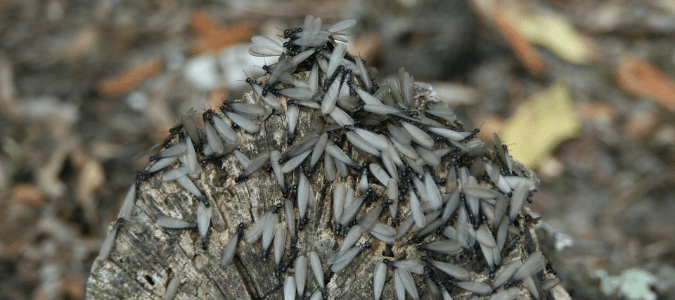
Most homeowners have heard of termites, and know that these pests chew their way through wooden structures, including houses, garages and fences, as well as other natural food sources. Termites cause billions of dollars worth of damage to homes and properties each year. Their colonies can number in the thousands or even millions, and a termite colony can lay waste to wooden beams, rafters, siding or flooring in your home or garage.
Which types of wood are their favorites? For example, do termites eat cedar, an evergreen tree that is common in Texas and other southern states? Or, if some people think cedar is an effective DIY method to keep wool moths at bay, you might wonder: could cedar repel termites as well?
The short answer is that while some research has shown that some types of commercially-available wood may be more palatable to termites than others, subterranean species have been found to destroy most types of lumber and can feed on practically any live tree. Let’s learn more about the destructive power of these insects and what you can do to avoid an infestation.
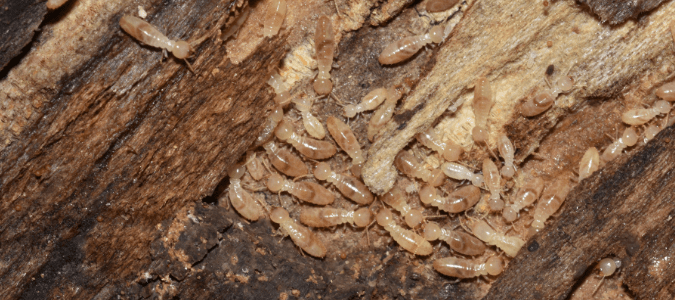
How Fast Do Termites Eat Wood?
An average subterranean termite colony—the species responsible for a majority of damage to our homes—can consume quite a lot of wood within just a few months. Some experts estimate that a termite colony numbering in the tens of thousands can consume up to a foot of 2”x 4” wood within just six months.
There are three main types of termites in the United States:
- Subterranean termites: These termites are found all over the U.S. (except for in Alaska), and they are most common in warmer regions. These termites build their colonies, or nests, under the ground, since they require moisture from soil to survive, and near people’s homes and garages, since they need easy access to a plentiful food source.
- Drywood termites: Most often found in the western, southwestern and southern regions of the U.S., these termites are most likely to feed on drier wood sources, such as hardwood flooring, furniture, wooden frames and other structures. Unlike subterranean termites, they do not need moisture from soil to live.
- Dampwood termites: Usually found in the northwestern region of the U.S., and sometimes in the southwestern and southeastern regions as well, these termites feed on wood with high moisture content, such as woodpiles and rotting tree stumps. Because of this, they are less likely to be found inside the home than other types of termites.
The termites we typically see are dark brown or black, with long wings. Since subterranean species live underground, we are unlikely to see one of these pests, unless they are setting out to establish a new colony, which happens each spring. These scouts are called reproductives or swarmers, and have wings, which causes many of us to confuse termites with flying ants, which can also swarm around homes.
For many homeowners, one of the signs of a termite infestation is piles of shed wings, often found in cobwebs and around doors or window sills. Another common sign is mud tubes found outside, near the foundation of the home. Constructed by worker termites, these tubes connect the underground colony with the house or other structure serving as a food source.
If you spot several winged termites together, it’s imperative to call in a pest control specialist. An experienced professional will be able to properly identify what kind of infestation you have and can build an effective treatment plan to get rid of swarming termites or to address other pest infestations.
As we mentioned above, subterranean termites are by far the most destructive, mainly because their colonies can number in the many thousands or even in the millions. These termites are also extremely destructive, simply because they are able to go undetected for long periods of time before being discovered, as their colonies are underground and they typically feed on hidden interior wood sources. They eat day and night, year-round and by the time evidence of their activity becomes apparent, they are likely to have caused extensive damage.
Furthermore, as they feed on wood, termites create holes and tunnels in wooden boards and beams, which weakens the boards’ structure. This greatly increases the impact of the damage that termites can cause in just a short period of time.
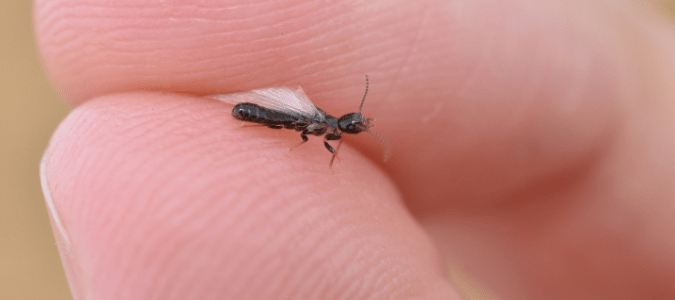
What Type Of Wood Do Termites Eat?
The part of the wood that termites feed on is called cellulose—the organic component within wood and other types of plants that makes them so strong. This is why termite feeding activity causes such problems within homes and other structures—they are literally eating away at the strength of the structure, weakening it over time. So what type of wood do termites eat? Is there a type of wood that termites dislike or avoid?
Some types of termites prefer wood that is damp or rotting, which is why homeowners who want to prevent termite infestations keep dead trees and limbs cleared away from their property. If you have do have woodpiles or fallen logs, move these well away from the house, garage, fence line and any other wooden structure in order to minimize any potential for termites to bridge the distance from the rotting wood to your home.
Termites tend to leave new pressure-treated wood alone. As this wood ages, it can become vulnerable to attack. These pests also don’t like wood-composite building materials, as they are made with plastic components and contain less natural material. Thus, pressure-treated and composite wood products may be good choices for building structures that are more resistant to termite infestations. There is also natural termite resistance in the inner portion of trees that is called heartwood. This is the part of the wood that is dense, hard and nonliving. Its density makes it tougher for termites to chew through. Therefore, termites are less likely to attack furniture or flooring made out of any variety of heartwood.
While termites tend to avoid certain types of lumber, including yellow cedar trees, redwoods, cypress trees and teak trees, they still can consume these woods—especially if it’s the only available food source. Thus, building with hardwoods of these varieties will provide some natural resistance to termite infestations, but these woods still can’t provide complete or long-term protection against these invasive pests. Since termites are constantly on the move, homeowners need to be vigilant to prevent a termite infestation.
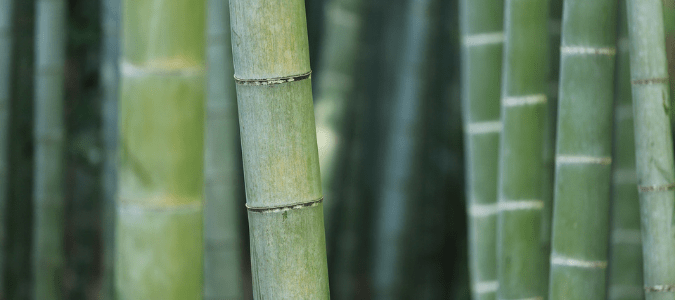
Do Termites Eat Bamboo?
Some people wonder, do termites eat bamboo? Bamboo is very hard, after all, and it’s actually not technically a wood, but a grass. However keep in mind, like trees and other plants, bamboo contains cellulose, which means it is a potential food source for termites. Therefore, termites can still feed on these plants, giving these voracious pests another reason to stick around on your property.
Are bamboo flooring and other building materials termite resistant? Builders now can choose from a broader array of materials and methods to help new homeowners avoid termite damage. Are there any other parts of your home other than your wood that might be vulnerable?
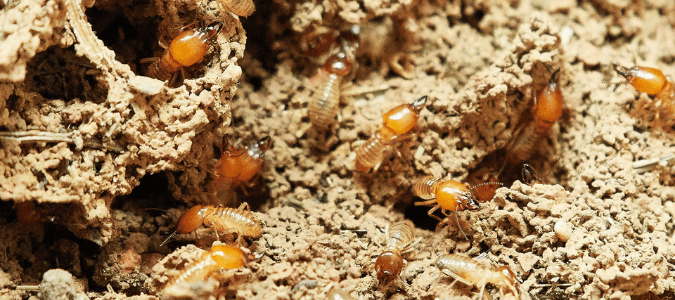
What Do Termites Eat Besides Wood?
Some homeowners wonder what else termites eat other than wood. Would providing termites with an alternate food source make them less interested in the wood that makes up your house, fence or garage? Can termites eat concrete, for example? While this is a good idea, in theory, the fact of the matter is that termites feed specifically on cellulose, means they have the ability to feed on essentially any plant matter.
Trees and wood are their preferred diet and make up the majority of what they eat, but termites can also feed on paper as well as other materials commonly used at home. Termites in homes have been found to chew their way through books, wallpaper and drywall. They have even been found to chew through plastic, despite the fact that this substance contains no nutrients so it won’t sustain a termite colony’s nutritional needs.
How Can I Keep Termites Away From My Home?
Keeping your home safe from termites can be a long and tricky process. The best way to protect your home from termites is during the construction phase. Once your home is built, experts agree that periodic inspections by pest control professionals are necessary to ensure no termite colonies have become established on your property.
Other steps you can take to make your property less hospitable to termites include:
- Keeping the soil near your foundation well drained by installing downspouts and gutters that direct moisture away from your home.
- Closing any gaps in cement foundations and openings where utilities pass through your walls.
- Repairing any leaks promptly.
- Keeping plants away from any vents.
- Planting trees and shrubs away from your foundation.
- Moving wood piles and firewood away from your home.
ABC Can Protect Your Property From Termite Damage
For small creatures, termites can be responsible for a significant amount of damage to your biggest investment. Fortunately, the experienced specialists at ABC Home & Commercial Services are trained in all aspects of termite control. We customize our methods for each home’s particular needs. We approach termite infestations from multiple angles, including eliminating existing termites, ensuring that the entire colony is wiped out and setting up an active barrier to prevent new colonies from forming. We also conduct regular, thorough follow-up inspections to make sure the problem doesn’t develop again in the future. With ABC’s help, you can rest easy in the knowledge that you won’t have to worry about termite damage.
